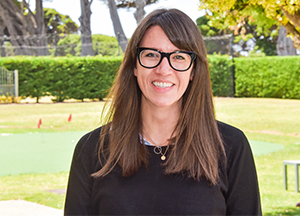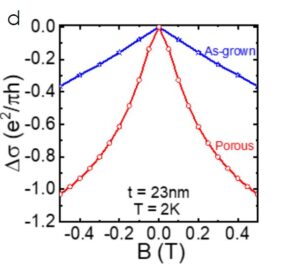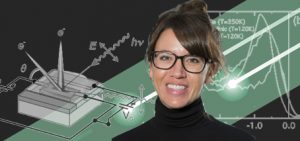The Challenge
There is a high demand for flexible thermoelectric films that can be incorporated into low-energy electronics to recapture waste heat and enable wearable battery-free devices. High performance thermoelectric materials require high electrical conductivity generally being accompanied by low thermal conductivity. However, these two quantities are typically linked with high electrical conductivity resulting in high thermal conductivity. The challenge lies in realizing a material where these two key properties can be decoupled.
The Solution
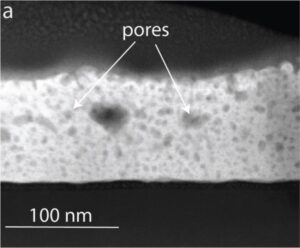
A tunnelling electron microscope cross-section of thin-film bismuth telluride (Bi2Te3) shows the disordered porosity created by ion irradiation
Topological insulators (TIs) are a new type of quantum material and exhibit metallic behaviour (e.g. high electrical conductivity) on the material surface. A porous topological insulator exhibits high electrical conductivity originating from the metallic surface states and low thermal conductivity as a result of porosity, effectively decoupling electrical and thermal conductivity.
Key Benefits
- High thermoelectric figure of merit expected
- Porosity can be introduced through ion irradiation
Development Stage
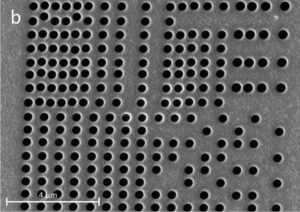
Scanning electron microscope imagery of the Bi2Te3 shows the highly ordered porosity introduced by gallium-ion beam patterning
Highly optimised procedure to grow centimetre-scale films of topological insulators with controlled crystallinity and porosity. Seeking seed funding and strategic partners for further material and module development.
Brief Description & Differentiation
- Porosity introduced through ion irradiation (disordered, figure 1a) or Ga ion patterning (ordered, figure 1b)
- Samples become more metallic-like and topological surface states remain upon introduction of porosity (figure 1c)
- Phase coherence length enhanced in porous samples (figure 1d)
- Results indicate high electrical conductivity and low thermal conductivity can be expected.
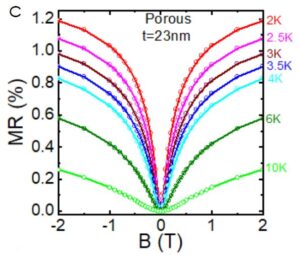
Magnetoresistance from porous Bi2Te3 thin film showing weak antilocalization: topological surface states remain upon the introduction of disorder. We have also found that the samples become more metallic-like.
Intellectual Property
Owned by Monash University
Key Publications
- A. Nguyen et al. ‘Increased phase coherence length in a porous topological insulator’ Physical Review Materials 7 064202 (2023)
More information
- Contact Dr Julie Karel, Monash University julie.karel@monash.edu
-
Contact Dr David Cortie, ANSTO/University of Wollongong david.cortie@uow.edu.au

